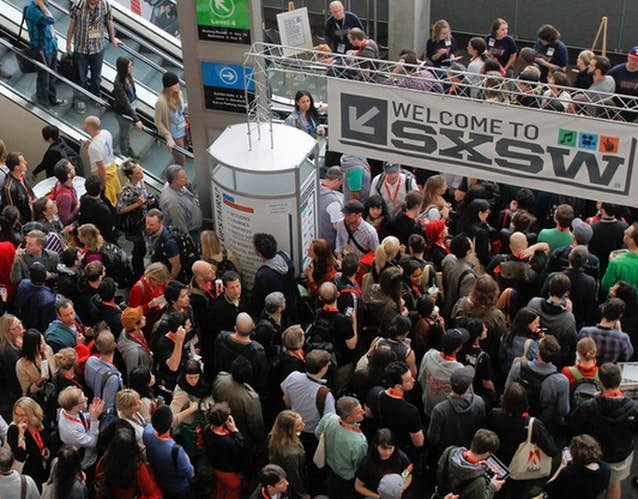By Rob Pegoraro
SXSW is all about FOMO. Between the festival’s events being scattered across the city and a designed-for-dismay schedule that can schedule dozens panels on top of each other, this annual gathering is guaranteed to inflict Fear Of Missing Out.
I’d like to think that I’ve learned how to manage this chaos–I’ve attended SXSW’s tech-oriented Interactive conference every year since 2012–but instead, I kept hearing about fascinating things I’d missed via comments like “great emoji panel” (yes, actual event) or “they had drones delivering piñatas” (apparently that happened too).
The only sane response is to accept that you don’t run your SXSW schedule–your current location does. Here are my own highlights from SXSW Interactive, along with what I had to miss to catch each one.
- President Obama’s Q&A Friday with Texas Tribune editor Evan Smith, which was really a two-fer talk. His exhortation to SXSW techies to lend their talents to help make government great again made sense and had people chuckling. But his explanation about how smartphone encryption shouldn’t be an “absolutist” wall against law enforcement–unlike, say, the Fifth Amendment-protected contents of your mind–enraged many of them.
What I had to miss to watch that (via a TV feed): a presentation about self-driving cars by Chris Urmson, director of Google’s efforts in that area.
- Saturday’s lightly-attended Online Harassment Summit combined compelling testimony from the targets of concerted abuse on social-media (for example, former Texas state senator and Democratic gubernatorial candidate Wendy Davis) with practical talk about what to do about it. A key lesson panelists shared: Be a good bystander and call out toxic behavior when you see it aimed at somebody else.
What I had to miss to catch those panels: The two other online-harassment panels going on at the same time as whatever one I was attending, right in the same hotel.
- Writer Kevin Kelly’s talk Monday about how trends in software, robotics and data will help us if we push them in the right direction instead of trying in vain to stop them. For example, the Wired co-founder said artificial intelligence ought to yield such “narrow but useful” AIs as self-driving cars that only know getting passengers to destinations without hitting anything else. And Kelly’s neologism “co-veillance”–you know what companies track you, you can track them, you can edit what they know, you get useful services in return–is worth remembering the next time you some new dot-com asks for your information.
What I had to miss: A talk a few blocks away about promising research in “brain prosthetics” that would restore damage to your memory.
- The SXSW trade-show floor featured a cornucopia of strange and intriguing demos. At NASA’s booth, I put on an HTC Vive headset for a virtual-reality tour of the International Space Station (sadly, zero-gravity not included). Steps away, the Human Rights Foundation’s Flash Drives For Freedom project collected attendees’ flash drives to fill with e-books and other media for later smuggling into North Korea. And the Burlington, Mass., startup Uvero put tiny balloons inside my ears to map their contours digitally for its custom-fitted earbud headphones; yes, that felt a little weird.
What I had to miss: Charging my phone and my laptop, which meant I watched sci-fi writer Bruce Sterling’s closing keynote Tuesday while sitting on the floor next to a power outlet. At the end of this rambling talk, the Austin resident noted how SXSW has grown from its debut 30 years ago to this year’s highest-profile guest: “The President’s here–that means you’ve all grown up.”
Read this article on USA Today.
